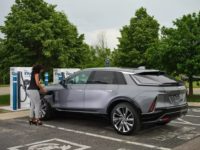WASHINGTON—The U.S. Environmental Protection Agency (EPA) has issued final national pollution standards for passenger cars, light-duty trucks, and medium-duty vehicles for model years 2027 through 2032 and beyond. The final standards deliver on the significant pollution reductions outlined in the proposed rule, while accelerating the adoption of cleaner vehicle technologies.
According to EPA projections, there will be an increase in U.S. auto manufacturing employment in response to these final standards, consistent with the more than $160 billion in investment in clean vehicle manufacturing announced over the last three years. Once fully phased in, the standards will also save the average American driver an estimated $6,000 in reduced fuel and maintenance over the life of a vehicle.
“On factory floors across the nation, our autoworkers are making cars and trucks that give American drivers a choice—a way to get from point A to point B without having to fuel up at a gas station,” says Ali Zaidi, President Biden’s national climate advisor. “From plug-in hybrids to fuel cells to fully electric, drivers have more choices today.
“Since 2021, sales of these vehicles have quadrupled and prices continue to come down,” claims Zaidi. “This growth means jobs, and it means we are moving faster and faster to take on the climate crisis….”
“While I am pleased to see the president’s focus on greenhouse gas emissions reduction, his statement that the target is ‘that half of all new cars and trucks sold in 2030 would be zero-emission’ includes a common misconception that zero ‘tailpipe’ emissions translates to zero-emission,” warns Andre Boehman, Ph.D., a professor of mechanical engineering and director of the W.E. Lay Automotive Laboratory at the University of Michigan.
“For the average American, the electricity used to charge an electric vehicle still has a significant carbon footprint (on average, our electricity still yields more than 300 grams of CO2 equivalent emissions per kilowatt-hour),” explains Boehman. “Electric vehicles give a large increase in vehicle energy efficiency and eliminate tailpipe pollutant emissions, but their carbon footprint and environmental impacts (through production and through driving) are not zero.
“This regulation does not address the existing vehicle fleet and its carbon emissions,” claims Boehman. “Those emissions need to be addressed as well, and can be reduced by ramping up the availability of renewable fuels for gasoline and diesel vehicles.
“The rapid expansion of renewable diesel for decarbonizing diesel cars and trucks is already underway, with a tenfold increase in production capacity expected in 2024 vs. the capacity in 2019,” Boehman points out.



